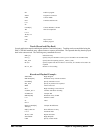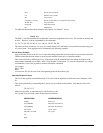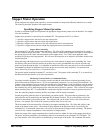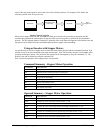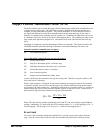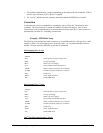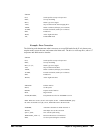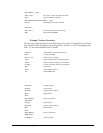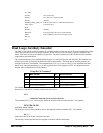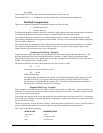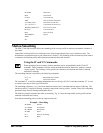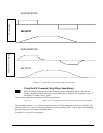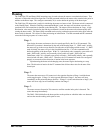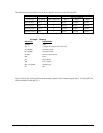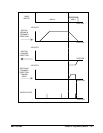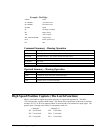
DMC-1700/1800 Chapter 6 Programming Motion • 125
spx=_SPX
#LOOP; Save speed value
SP2048; Set a new slow correction speed
WT100; Stabilize
JP#END,@ABS[_QSX]<10; End correction if error is within defined tolerance
YRX=_QSX; Correction move
MCX
WT100; Stabilize
JP#LOOP; Keep correcting until error is within tolerance
#END; End #CORRECT subroutine, returning to code
SPX=spx
EN
Dual Loop (Auxiliary Encoder)
The DMC-1700/1800 provides an interface for a second encoder for each axis except for axes configured for stepper
motor operation and axis used in circular compare. When used, the second encoder is typically mounted on the
motor or the load, but may be mounted in any position. The most common use for the second encoder is backlash
compensation, described below.
The second encoder may be a standard quadrature type, or it may provide pulse and direction. The controller also
offers the provision for inverting the direction of the encoder rotation. The main and the auxiliary encoders are
configured with the CE command. The command form is CE x,y,z,w (or a,b,c,d,e,f,g,h for controllers with more
than 4 axes) where the parameters x,y,z,w each equal the sum of two integers m and n. m configures the main
encoder and n configures the auxiliary encoder.
Using the CE Command
m= Main Encoder n= Second Encoder
0 Normal quadrature 0 Normal quadrature
1 Pulse & direction 4 Pulse & direction
2 Reverse quadrature 8 Reversed quadrature
3 Reverse pulse & direction 12 Reversed pulse & direction
For example, to configure the main encoder for reversed quadrature, m=2, and a second encoder of pulse and
direction, n=4, the total is 6, and the command for the X axis is
CE 6
Additional Commands for the Auxiliary Encoder
The command, DE x,y,z,w, can be used to define the position of the auxiliary encoders. For example,
DE 0,500,-30,300
sets their initial values.
The positions of the auxiliary encoders may be interrogated with the command, DE?. For example
DE ?,,?
returns the value of the X and Z auxiliary encoders.
The auxiliary encoder position may be assigned to variables with the instructions



